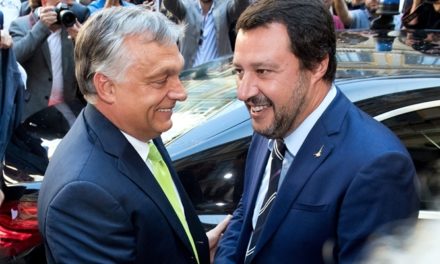Sixty years ago, President Kennedy was assassinated, on November 22, 1963.
"That little Kennedy thought he was God," said Allen Dulles, the former director of the CIA, who had been fired by the president due to the failure of the Bay of Pigs invasion. The assassination of the most popular president of the United States, John F. Kennedy, changed America in a certain sense, because World War II the optimism that followed the Second World War was suddenly replaced by a deep depression and distrust of the government, the effects of which are felt to this day.
Sixty years ago, on November 22, 1963, John Fitzgerald Kennedy, the first Catholic president of the United States, was caught in the crossfire and shot dead by two or three groups of snipers in broad daylight in Dallas, Texas, in the presence of nearly three hundred people.
This is the brief summary of the drama that not only shook US society, but we can say that it shocked the entire world. The next morning, there were snaking queues in front of newsstands in Budapest as well. There are those who compare the trauma experienced then to 9/11. Early surveys showed that 62 percent of the American public did not believe that a single assassin killed the good-looking, charismatic Kennedy, which was clearly proven by the Zapruder film, which was later made public.
He whistled at the danger
Texas was a quintessentially Republican hotbed—and heavily right-wing. The Democrat Kennedy considered his appearance here to be politically justified, even though there were very serious objections against him here. Texas hardnecks saw Kennedy as a handsome man determined to turn the country over to liberals and blacks. An advertisement appeared in the local newspaper and leaflets with the headline "BETRAYAL", in which Kennedy was accused of weakness and leniency in relation to communism, i.e. treason. The crowds celebrating him in the streets seemed to dispel any initial negative opinions, but when the presidential limousine motored onto Elm Street and passed the Texas School Book Depository, everything changed.
In the front of the limousine were two men from the Secret Service, William Greer at the wheel and Roy Kellerman, the group leader in charge of protection, next to him. Texas Governor John Connally and his wife in the middle, and the presidential couple in the back. The fact that they drove through the city in an open limousine is also incomprehensible, because in the previous weeks the law enforcement agencies received several warnings that an assassination attempt was being planned against the president. Because of this, they postponed their appearance in the city of Tampa, Florida and skipped Chicago. Kennedy himself had said before his arrival that they could easily kill him from the top of a building, yet no precautions had been taken to put the roof on the limousine. Did the president want to tell his political opponents that he dared to take the risk or did he trust in the charm of his personality? You can't tell, but it was a mistake.
Today it can be definitely stated that President Kennedy was hit by three life-threatening shots at 12:30 on November 22, the third of which definitely caused his death.
The first shot hit his neck directly, a second pierced the right side of his back, the third shot was an explosive projectile that came directly from the right side of the grassy hill. And this fatal shot destroyed the president's brain, which is clearly visible in frames 313-314 of the film made by Abraham Zapruder.
Two conspiracies
The first and third shots had to come from the same direction, and they were actually the two most difficult shots because they had to be absolutely accurate, otherwise they could have easily hit cars, motorcycles, or people behind the presidential limousine. In total, maybe 10-11 shots were fired at the people in the limousine. Motorcycle Police Officer HR Freeman and Dallas Police Officer Stavis Ellis, who was in charge of the Dallas Motorcycle Escort, later emphatically stated in interviews with reporters and on radio shows that there was a hole in the windshield near the driver's side rearview mirror large enough to fit a pencil through. Several police officers saw the hole at Parkland Hospital, but a Secret Service agent came and convinced them that it was a crack, not a hole. This is important because later the Warren Commission wanted to prove at all costs that only three shots were fired in total, because investigators found three bullets on the sixth floor of the bookstore. There was also a small mistake here, because in the photo taken by the crime scene investigators, it was clear that one of the bullets had not even been fired, but never mind, in the end what mattered was what was in the reports. And the limousine was cleaned and removed very quickly.
The assassin shooting from behind worked with the highest "error percentage", perhaps because he probably used a rifle with a telescopic tube, which makes aiming more difficult when firing quickly.
It's pretty clear that two shooters attacked from the direction of the book store. Because several of the shots fired from behind missed their targets, they hit Governor Connally, who was wounded in four places in total, twice on his upper body, then on his right wrist and left thigh. Shrapnel from one stray bullet wounded James Tague, a young man standing at the foot of the overpass, and there was also a hole in the windshield. That's at least four shots from the back alone. According to the Warren Commission, a total of seven wounds to the President and Connally were inflicted by a single "magic bullet", which would indeed border on a miracle, as the bullet was later found unharmed in the hospital. Such obvious inabilities have rightly raised doubts about the commission's credibility. However, the person who shot from the right, from the grassy hill, did not make a mistake or there were no traces of the shot. The "barrage of bullets", as Commander Kellerman, sitting in the limousine, put it, took place in just 5.6 seconds.
That's why Kennedy died
At least forty bystanders later stated that the first shot came from the grassy knoll to the right of Elm Road, and since the last shot came from there, many people started running in that direction. Several more witnesses, however, claimed to have heard the shots from the direction of the book warehouse. The Warren Commission did not want to resolve the obvious anomaly by saying that the president was shot at from two directions, because that would have proved that there was a conspiracy that required at least two people. The commission did not want to take the investigation in this direction and tried to shift all responsibility to a single assassin, Lee Harvey Oswald, in which the mainstream media helped them a lot. Because there were two conspiracies, one to create the assassination and the other to cover it up, but it was organized at the highest level of the US state structure and spanned the state bureaucracy. The assassination was carried out by Cuban exiles, now known by name, but the more important question is why.
When the president was taken to nearby Parkland Hospital, his heart was still beating and he was breathing, but his pulse was no longer palpable. The doctors did everything, but since most of the right hemisphere was missing, they were powerless. Here Dr. Surgeon Malcolm Perry said at the press conference on the 22nd that there was an entry wound on the neck, which he emphasized once again. Unfortunately, this neck wound was widened for a laryngotomy to insert the breathing tube. However, Perry was pressured earlier in the evening by the Secret Service and others before he changed his statement and called the neck wound an exit wound. This was again a crucial moment in the cover-up, as the entrance wound to the neck meant that the shot could not have come from the book warehouse.
After JFK's death was announced, his body was hurriedly and violently taken to the presidential private plane, bypassing the legal requirement.
The then 46-year-old President Kennedy's body had not even cooled down when Vice President Lyndon B. Johnson took the presidential oath on board the plane in the presence of a shocked Jacqueline Kennedy in a bloodied dress, newly widowed. When the photo made of this went around the world, few thought that they were seeing the final act of a classic coup d'état.
What factors led to the conspirators' determination to assassinate the leader of the most powerful nation in the free world? The passions of individuals and groups merged with very serious power and financial considerations, all of which President Kennedy stood in the way of. One such reason was the case of the Cuban exiles, who, working with the CIA, blamed Kennedy for the Bay of Pigs failure. Their anger was only exacerbated by the fact that, from the spring of 1963, Kennedy was clearly, albeit secretly, seeking reconciliation with Castro. Cuba's case was so "hot" that a few hours after the assassination, fighter jets took off from McDill Air Force Base in Florida, fully armed, and headed for the island nation, when they were called back at the last minute. Many people were surprised that there was no invasion of Cuba. The upper echelons of the military-military-industry-CIA triumvirate in the background dropped Cuba and traveled to a much bigger business, which was later called the Vietnam War. Kennedy wanted to withdraw from it completely in 1965, and this was probably the most serious argument that led to his assassination.
Featured image: John F. Kennedy, Jackie Kennedy and Texas Governor John Connally before the fateful trip, November 22, 1963, at the Dallas airport. Source: Getty Images













